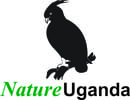Raptor Road Counts
Uganda’s overall biodiversity has been monitored for a number of years but the special concerns about raptors, and the 40-year interval, makes the present study to be particularly interesting. Uganda is losing its biodiversity at a rate of about 1% per year, similar to the global rate and top predators such as raptors would be expected to reflect this. Further, they have been found to be declining in many countries including some in West Africa. Essentially, the intention is to find out whether or not raptors have decreased using routes used by Leslie Brown in the 1960s.
Nature Uganda has conducted research and monitoring on a variety of birds for over 20 years.
This data has been used for guiding policy formation, advocacy work, action to conserve and preserve birds and their habitats among others. Additionally, species action plans for example the Grey Crowned Crane and Lesser flamingo Species Action Plans have been developed as a result of information generated from such studies.
Nature Uganda has many monitoring programmes including the biannual waterfowl counts, common birds monitoring and Raptors Surveys and Vulture Counts among others. The organization’s effort on Raptors has before been supported by Peregrine Fund and the Royal Society for the protection of Birds for the previous surveys. We hope to maintain our annual Raptor surveys when funding is available.
Objectives
The purpose of these Raptor counts is to continue performing counts on the roads used by Leslie Brown in 1960s and compare results with records available for the 1970s and 1980s and the results between 2008, 2009, 2010 and the years that follow. The results shall be summarized and disseminated to promote awareness about raptors in Uganda.
Methodology
An established protocol is available and the survey teams for particular routes are known. The counts involve a moving vehicle with 3 to 5 observers probably sitting on the roof in rural roads but not on public roads. The first consideration is made such that counts are done not to include raptors departing from and returning to their roosts and therefore the survey are done from 0900 to 1600. This is to reduce time of day effects. The survey routes are usually 100 to 300 kilometers long. If the survey route involves more than one road, each road number and the time and place name where the route changes roads is recorded. The speed limits during counts are 30-50 kilometers per hour. Start and end time during the counts are recorded in hours and minutes. As a means to trace speed, the total distance traveled on the hour and on the half hour during the survey is recorded. All the raptors seen are counted and appropriately recorded in banded distances. Where need be the vehicle shall stop to count the numbers of individuals in large flocks. Only those birds spotted on stopping are recorded and any new birds sighted after stopping is not be recorded. Horizontal distance perpendicular to the road to individuals or the centers of groups as, <100, <200, <500, or >500 meters. Perched birds are recorded as “Perched” and flying birds as “Flying”.
Area of coverage
Our Raptors surveys cover three savannah National Parks (Queen Elizabeth, Murchison Falls and Lake Mburo) and connecting Public routes To and From these Protected Areas and to Entebbe airport. In doing this, we cover Protected Areas, agricultural land and pastoral lands in Uganda and cover the Western, Central, Northern and North Eastern parts of the country. The counts are done between January and March.

